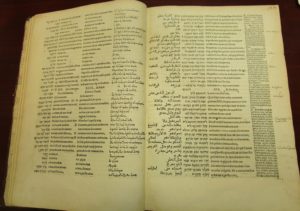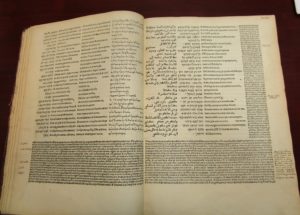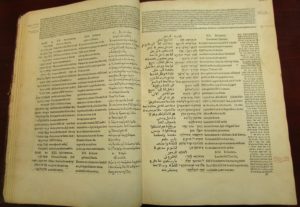To the Sources

When the Turks captured Constantinople in 1453, many Christians in the city fled to Europe to avoid capture. In their flight, the refugees brought with them Greek manuscripts of the Bible as well as writings of early church fathers and ancient classical writers. Latin had been the scholarly language of Europe for a millennium. The sudden availability of numerous Greek manuscripts encouraged the Renaissance humanists to go back to the sources (ad fontes in Latin) of Greek
Desiderius Erasmus of Rotterdam (1466-1536) was an important Renaissance scholar who went to the sources of not only classical learning but the Bible itself. He was the first to print a Greek edition of the New Testament. The printing of the Greek New Testament made the Scripture in the original language available to a wider number of scholars.
First Printed Greek New Testament, 1516
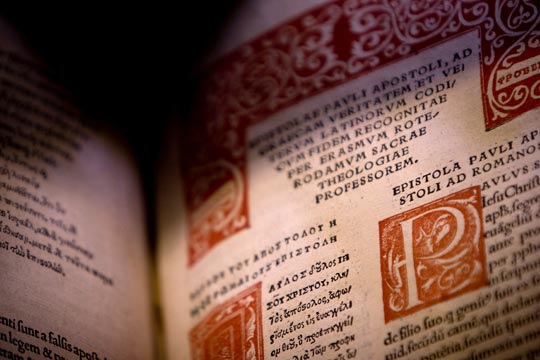
Erasmus, at the encouragement of his friend and printer Johann Froben, rushed to prepare an edition of the Greek New Testament to get it into print. The pair knew scholars in Spain were working on such a project, and they wanted to get into print first. Having the first printed Greek New Testament would be a publishing triumph. The Greek text was printed in the left hand column, and Erasmus’ new Latin translation from the Greek was on the right.
Erasmus based his text on five-six Greek manuscripts, none later than the 12th century. When he lacked a Greek manuscript for some passages, he made his own Greek translation from the Latin Vulgate. Sometimes he changed the Greek text to conform to the Latin meaning. Because of the rush, there were many typographical errors in his first printing. These were corrected in the second edition of 1519. Martin Luther used this second edition when making his translation of the New Testament into German. William Tyndale used Erasmus’ third edition of 1522 to translate the New Testament into English.
Psalterium, Hebraeum, Graecum, Arabucim, Chaldeum [The Psalter in Hebrew, Greek, Arabic, and Aramaic] . 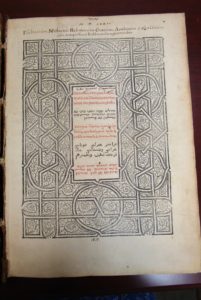 Agostino Giustiniani, Genoa: Petrus Paulus Porrus, 1516.
Agostino Giustiniani, Genoa: Petrus Paulus Porrus, 1516.
This Genoan Psalter is the first polyglot (many languages) printing of any part of the Bible. The psalms appear in 8 columns across two pages – in Hebrew, a Latin paraphrase, the Latin Vulgate, the Septuagint Greek, Arabic, Aramaic, a Latin translation of the Aramaic, and scholarly notes. The column with the scholarly notes and commentary sometimes flows into the bottom of the page. The Genoan psalter was a great linguistic and typographical achievement, and is only the second known work to use Arabic moveable type.
The Psalter also contains the first biography of Christopher Columbus! Giustiniani was proud of his fellow Genoan and thought Psalm 19:4 (“their sound is gone out through all the earth and their words to the end of the world”) described Christopher Columbus’ voyages. The biographical note surrounds the text for three pages. (click on photos to enlarge).
